-
Product Name
IKBKE Polyclonal Antibody
- Documents
-
Description
Polyclonal antibody to IKBKE
-
Tested applications
WB, IHC, IF, IP
-
Species reactivity
Human, Mouse, Rat
-
Alternative names
IKBKE antibody; IKK-E antibody; IKK-i antibody; IKKE antibody; IKKI antibody; inhibitor of nuclear factor kappa-B kinase subunit epsilon antibody
-
Isotype
Rabbit IgG
-
Preparation
Antigen: Recombinant fusion protein containing a sequence corresponding to amino acids 495-716 of human IKBKE (NP_054721.1).
-
Clonality
Polyclonal
-
Formulation
PBS with 0.02% sodium azide, 50% glycerol, pH7.3.
-
Storage instructions
Store at -20℃. Avoid freeze / thaw cycles.
-
Applications
WB 1:500 - 1:2000
IHC 1:50 - 1:200
IF 1:50 - 1:200
IP 1:50 - 1:200 -
Validations
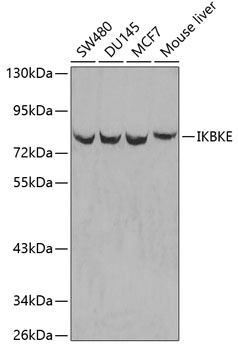
Western blot - IKBKE Polyclonal Antibody
Western blot analysis of extracts of various cell lines, using IKBKE antibody .Secondary antibody: HRP Goat Anti-Rabbit IgG (H+L) at 1:10000 dilution.Lysates/proteins: 25ug per lane.Blocking buffer: 3% nonfat dry milk in TBST.
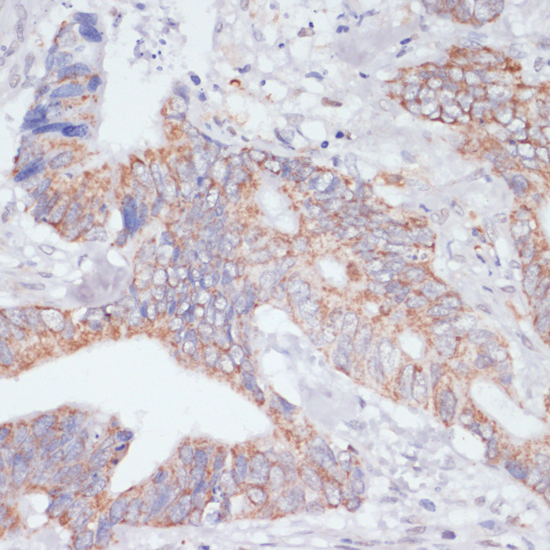
Immunohistochemistry - IKBKE Polyclonal Antibody
Immunohistochemistry of paraffin-embedded human colon carcinoma using IKBKE antibody at dilution of 1:200 (40x lens).
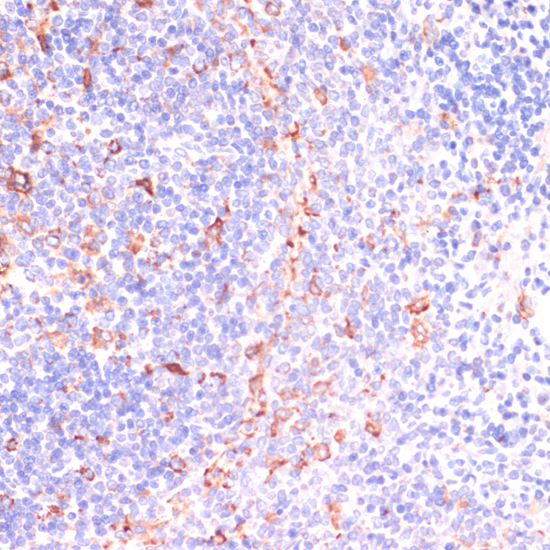
Immunohistochemistry - IKBKE Polyclonal Antibody
Immunohistochemistry of paraffin-embedded rat spleen using IKBKE antibody at dilution of 1:200 (40x lens).
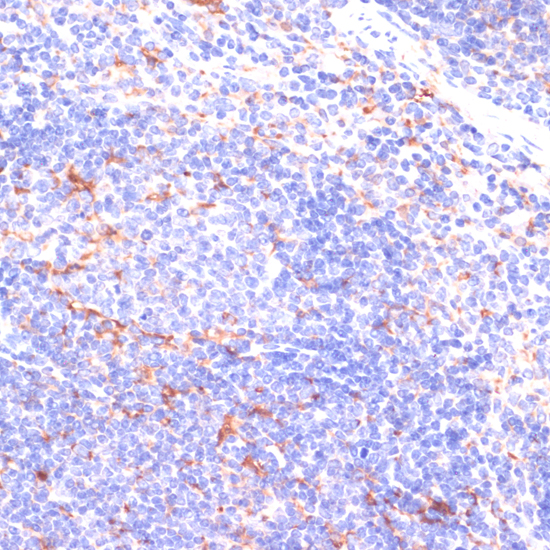
Immunohistochemistry - IKBKE Polyclonal Antibody
Immunohistochemistry of paraffin-embedded mouse spleen using IKBKE antibody at dilution of 1:200 (40x lens).
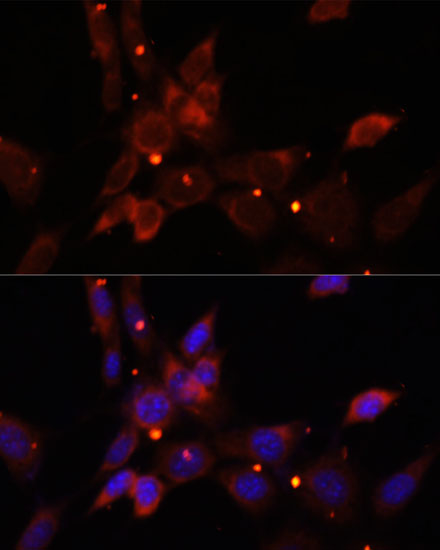
Immunofluorescence - IKBKE Polyclonal Antibody
Immunofluorescence analysis of NIH/3T3 cells using IKBKE antibody at dilution of 1:100. Blue: DAPI for nuclear staining.
-
Background
Serine/threonine kinase that plays an essential role in regulating inflammatory responses to viral infection, through the activation of the type I IFN, NF-kappa-B and STAT signaling. Also involved in TNFA and inflammatory cytokines, like Interleukin-1, signaling. Following activation of viral RNA sensors, such as RIG-I-like receptors, associates with DDX3X and phosphorylates interferon regulatory factors (IRFs), IRF3 and IRF7, as well as DDX3X. This activity allows subsequent homodimerization and nuclear translocation of the IRF3 leading to transcriptional activation of pro-inflammatory and antiviral genes including IFNB. In order to establish such an antiviral state, IKBKE forms several different complexes whose composition depends on the type of cell and cellular stimuli. Thus, several scaffolding molecules including IPS1/MAVS, TANK, AZI2/NAP1 or TBKBP1/SINTBAD can be recruited to the IKBKE-containing-complexes. Activated by polyubiquitination in response to TNFA and interleukin-1, regulates the NF-kappa-B signaling pathway through, at least, the phosphorylation of CYLD. Phosphorylates inhibitors of NF-kappa-B thus leading to the dissociation of the inhibitor/NF-kappa-B complex and ultimately the degradation of the inhibitor. In addition, is also required for the induction of a subset of ISGs which displays antiviral activity, may be through the phosphorylation of STAT1 at 'Ser-708'. Phosphorylation of STAT1 at 'Ser-708' seems also to promote the assembly and DNA binding of ISGF3 (STAT1:STAT2:IRF9) complexes compared to GAF (STAT1:STAT1) complexes, in this way regulating the balance between type I and type II IFN responses. Protects cells against DNA damage-induced cell death. Also plays an important role in energy balance regulation by sustaining a state of chronic, low-grade inflammation in obesity, wich leads to a negative impact on insulin sensitivity. Phosphorylates AKT1.
Related Products / Services
Please note: All products are "FOR RESEARCH USE ONLY AND ARE NOT INTENDED FOR DIAGNOSTIC OR THERAPEUTIC USE"
